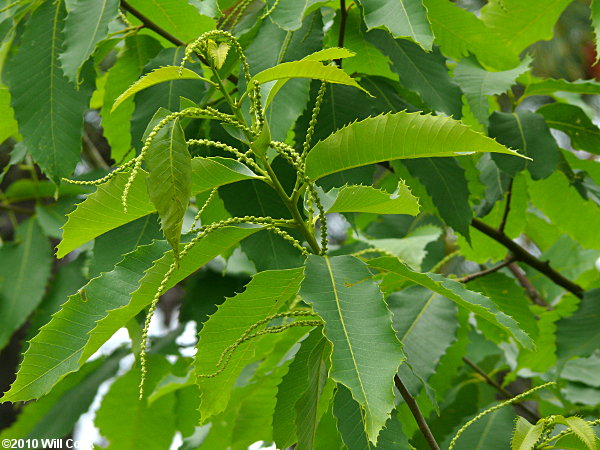
| Formerly a very common large tree of the Mountains and upper Piedmont regions of North Carolina. Because of the chestnut blight fungus (Cryphonectria parasitica), which was introduced on nursery stock of the Chinese Chestnut (Castanea mollissima) in 1904 in New York City. In the 1930s-1940s, almost all the large trees in North Carolina (and throughout American Chestnut's range) were killed back to the ground. Stump sprouts still cling on to life, occasionally surviving long enough to produce flowers and nuts. Pilot Mountain, Surry Co., NC 5/16/10.
|
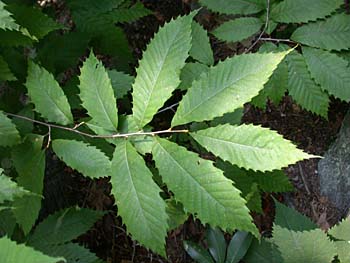
| The long-pointed leaves are sharply toothed, unlike the round-toothed leaves of Chestnut Oak (Quercus prinus). Also compare with Chinkapin (Castanea pumila), which has shorter leaves with less pronounced teeth and smaller burs. Carroll Co., VA 7/27/03.
| 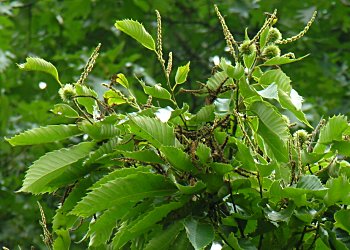
| Male and female flowers (catkins) of an extremely rare surviving mature tree. Buncombe Co., NC 7/8/06.
| 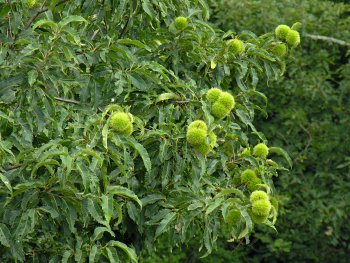
| One of the rare examples of an abundantly fruiting American Chestnut. This 20-foot high tree was covered with burs. Mahogany Rock, Alleghany Co., NC 9/3/06.
| 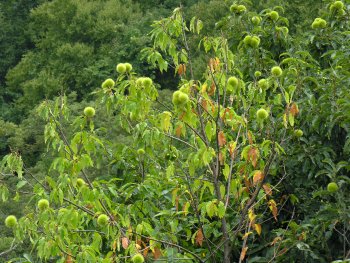
| Unfortunately the other side of this tree was starting to die back from the blight. Mahogany Rock, Alleghany Co., NC 9/3/06.
| 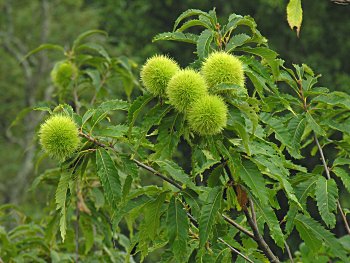
| Same tree. The bur prickles are very sharp! Mahogany Rock, Alleghany Co., NC 9/3/06.
| 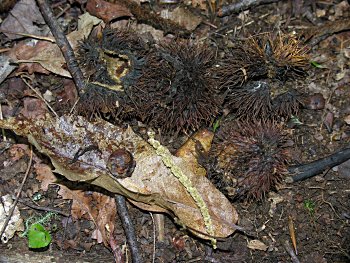
| Old fruit husks with a chestnut and a male catkin on a dead leaf. Buncombe Co., NC 7/8/06.
| 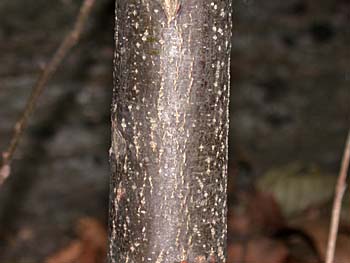
| Bark of a young stump sprout.
| 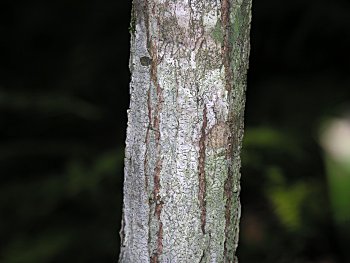
| Bark of an older stump sprout. Larger trees are rare -- most American Chestnut trees in their native range die back to their roots before they get much bigger than this. Carroll Co., VA 7/3/06.
| 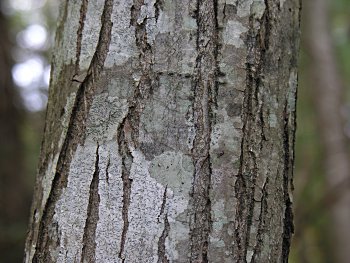
| Bark of a healthy 51' tall tree (13.5" circumference). Besides its large size, this individual tree is quite unusual in that it is not a stump sprout. Carroll Co., VA 10/16/06.
| 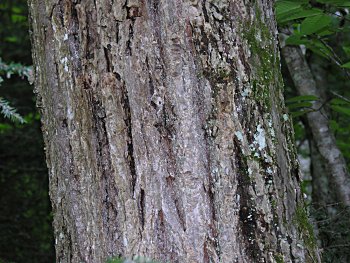
| Bark of a larger trunk. Buncombe Co., NC 7/8/06.
| 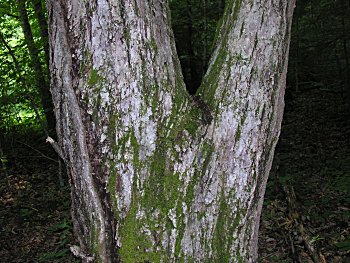
| Bark of a large tree. This is one of two healthy large trees surviving off Dillingham Road near Asheville. Buncombe Co., NC 7/8/06.
| 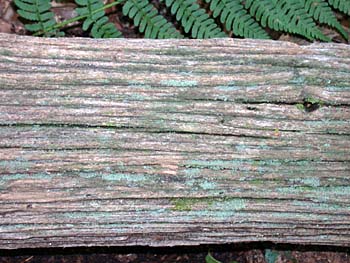
| The wood is very resistant to decay. In the mountains it's still easy to find logs of medium-large trees (such as this one) that died in the 1930s-1940s. |
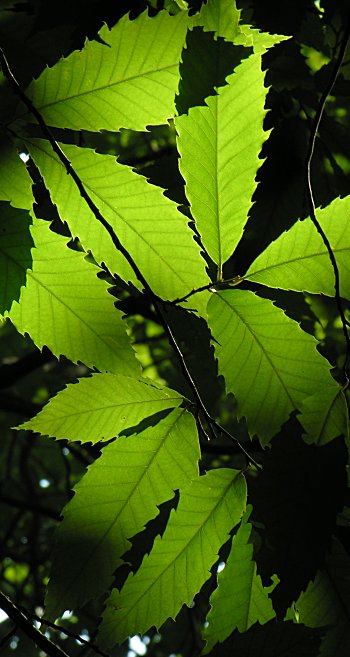
| Leaf patterns in the dappled sunlight (backlit, viewed from directly below). Carroll Co., VA 7/3/06.
|
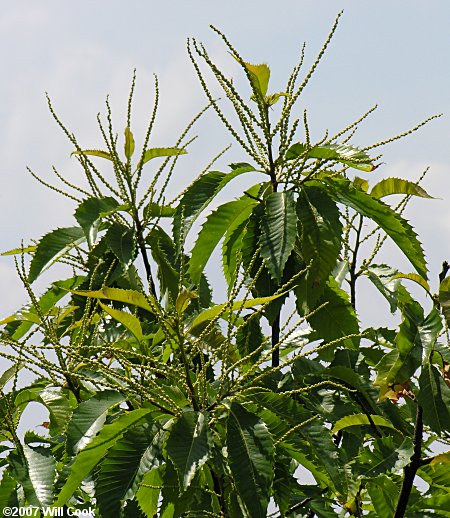
| Ashe Co., NC 7/6/07.
|
More information:
Canadian Chestnut Council
NCNatural
Trees of Alabama and the Southeast
Virginia Tech Dendrology
Recommended Tree, Shrub, and Woody Vine Identification Guides
|
|














